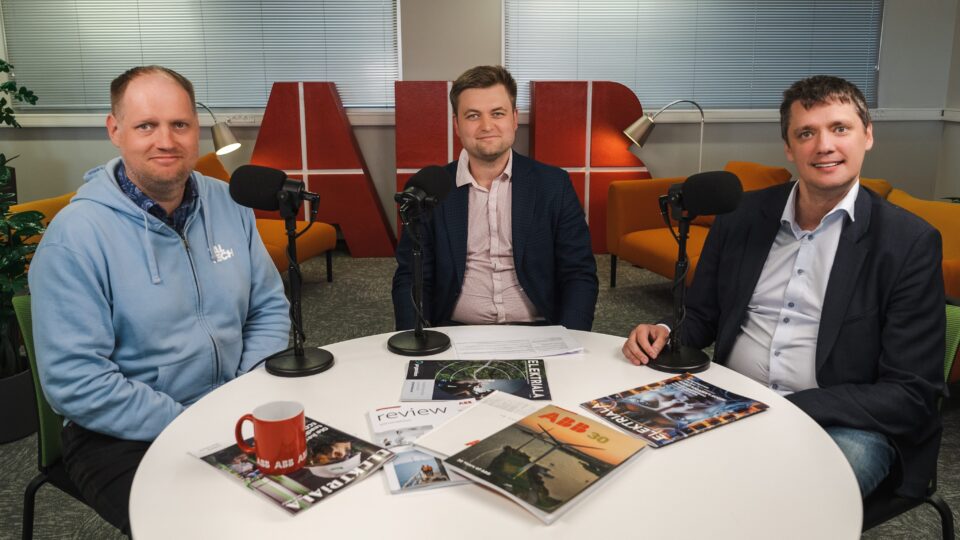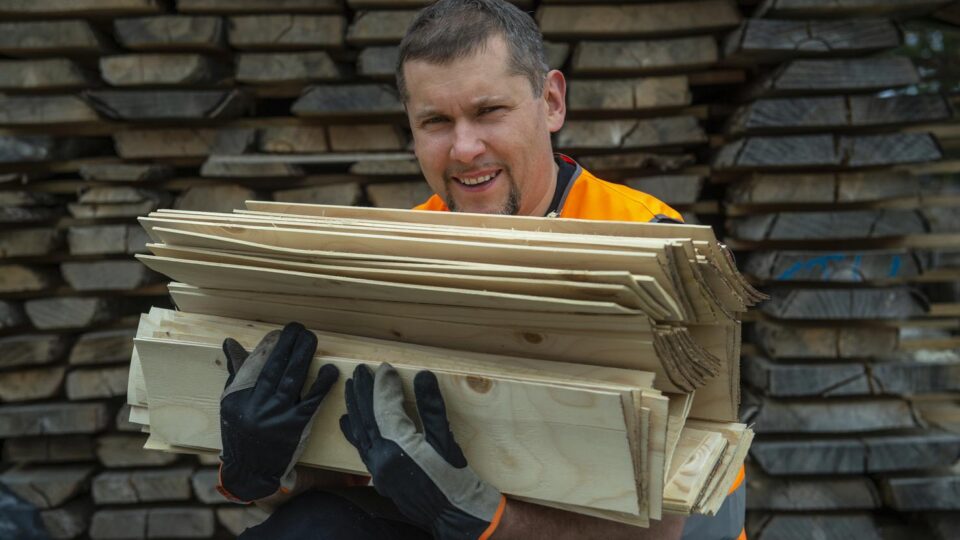From October 10 to 12, the sustainability festival Impact Day 2024 took place at Põhjala Factory in Tallinn. Henri Suomalainen, a specialist from the Division of Mineral Resources and Applied Geology TalTech’s Institute of Geology, gave a presentation on behalf of the university’s Circular Economy Core Lab, focusing on the importance of mineral resources in everyday life and their growing necessity in implementing the green transition. The following text is based on his talk.
Since 2023, more than eight billion people have been living on planet Earth, and the number is increasing by the second – it is predicted to reach nine billion by 2037, just 13 years from now! Rapid urbanization, globalization, economic growth, rising expectations for better living conditions, the shift to sustainable energy technologies, and overall technological advancement – all of this increases the demand for mineral resources, clean water, and energy.
Believe it or not, almost every aspect of our daily lives depends on mineral resources. Think about how you got to work today. Was it by car (an electric or hybrid vehicle, hydrogen car, fossil-fueled car, or a shared ride service), by public transport (again, possibly running on fossil fuels, gas, or electricity), an electric scooter, a regular bicycle, or on foot?
In any case, you walked or rode on a surface made from materials extracted through mining. And we all want to use electronics, own a mobile phone, and of course, live in a decent home. Even the construction materials of the building you’re in right now – as well as the heating and electricity – all come from mined resources. The food you eat is also indirectly connected to mineral resources through fertilizers. So it’s fair to say that mineral resources play a role in human life nearly as vital as food, water, and air.
Mineral resources play a role in human life nearly as vital as food, water, and air.
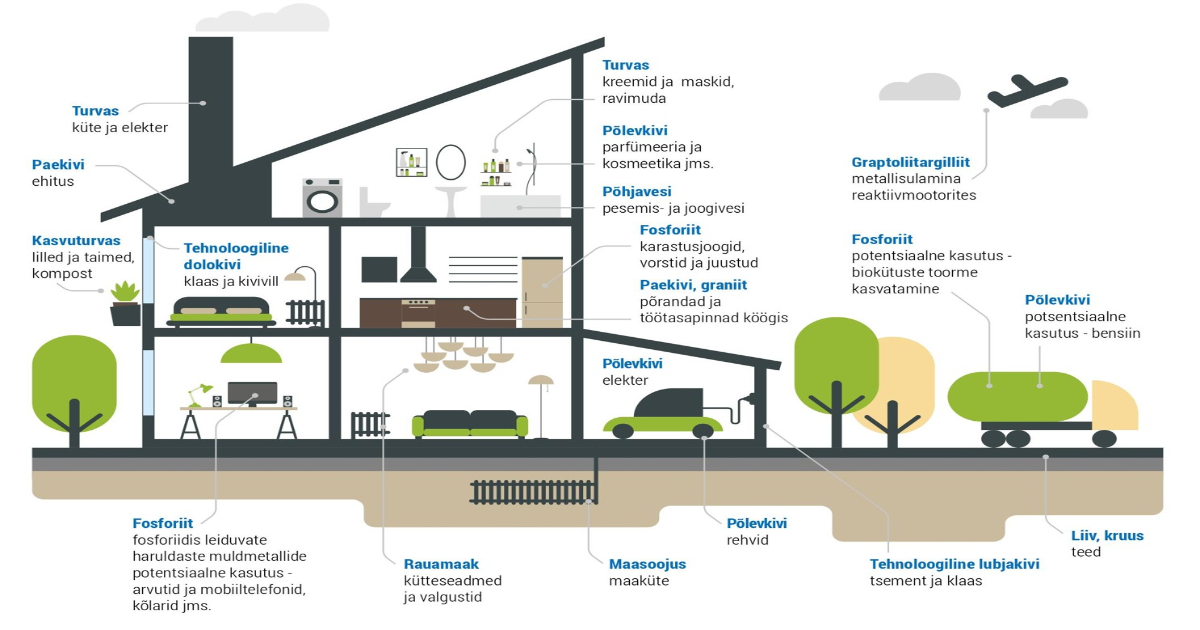
All aspects of our daily lives depend directly or indirectly on mineral resources – illustrated through the example of Estonia’s mineral wealth. (Based on the Principles of Estonia’s Subsurface Policy until 2050).
Eyes on the circular economy
Human society relies on the natural environment and natural resources for life and economic activity. These resources include forests, sunlight, (ground)water, wind, rocks and minerals, as well as fossil fuels. Mineral resources are derived from rocks, minerals, liquids, gases, or organic material found underground that have been studied, registered as resources, and deemed economically viable and useful to extract. According to the Constitution of the Republic of Estonia, natural resources are a national treasure that must be used sustainably. This means we must create opportunities for the sustainable and environmentally safe use of our resources and ensure their continued exploration.
However, Earth’s resources are finite. We have already used up nearly one-third of the planet’s natural resources, and every year, we are forced to resort to lower-quality materials. To sustain our current level of resource consumption, we would need 1.86 planets. That’s why we must increasingly shift our focus toward the circular economy – to make the most efficient use of existing materials and reduce the need for extracting and producing new ones.
We must increasingly shift our focus toward the circular economy – to make the most efficient use of existing materials and reduce the need for extracting and producing new ones.
So, how do we extract our resources? Through mining! On a broad scale, mining is divided into two types based on production methods – surface mining (open-pit and strip mining) and underground mining. The world’s deepest open-pit mine is the Bingham Canyon copper mine in the U.S., with a diameter of nearly 4.5 kilometers and a depth of 1.2 kilometers. The deepest underground mine in the world is in Mponeng, South Africa, reaching down 4 kilometers to extract gold. Mines can cover vast areas of land – Estonia’s own Estonia mine occupies an underground area the size of the city of Tallinn.
There are many kinds of mines around the world. While operations in Western countries or Europe are usually well-regulated, there are still many mines globally with poor working conditions and even child labor. There’s a significant chance that the cobalt in your phone came from a conflict zone. In general, the modern mining landscape is shaped by environmental impacts and how to mitigate them, social responsibility, mining governance policies, and economic uncertainty.
What about the mines of the future? They will likely involve fewer humans and more robots, use electric vehicles, and incorporate advanced mining technologies such as automation, remote control, and drones. In the future, we may even mine for minerals in the deep sea or outer space.
In the future, we may even mine for minerals in the deep sea or outer space.
Today, the most mined material globally is iron ore (much of it used for steel production), followed by moderate quantities of industrial minerals (like aluminum, chromium, manganese, copper, and zinc), and the smallest amounts are precious metals (like gold, platinum, and rare earth elements).
Where do we mine? All over the world, of course – but not in my backyard (NIMBY – Not In My Back Yard)! Did you know that one ton of mobile phones contains more precious metals than one ton of ore? So here’s a question: how many old phones do you have lying around? Think about the potential treasure hiding in your home. According to some sources, we carry around two-thirds of the periodic table in our pockets or bags every day.
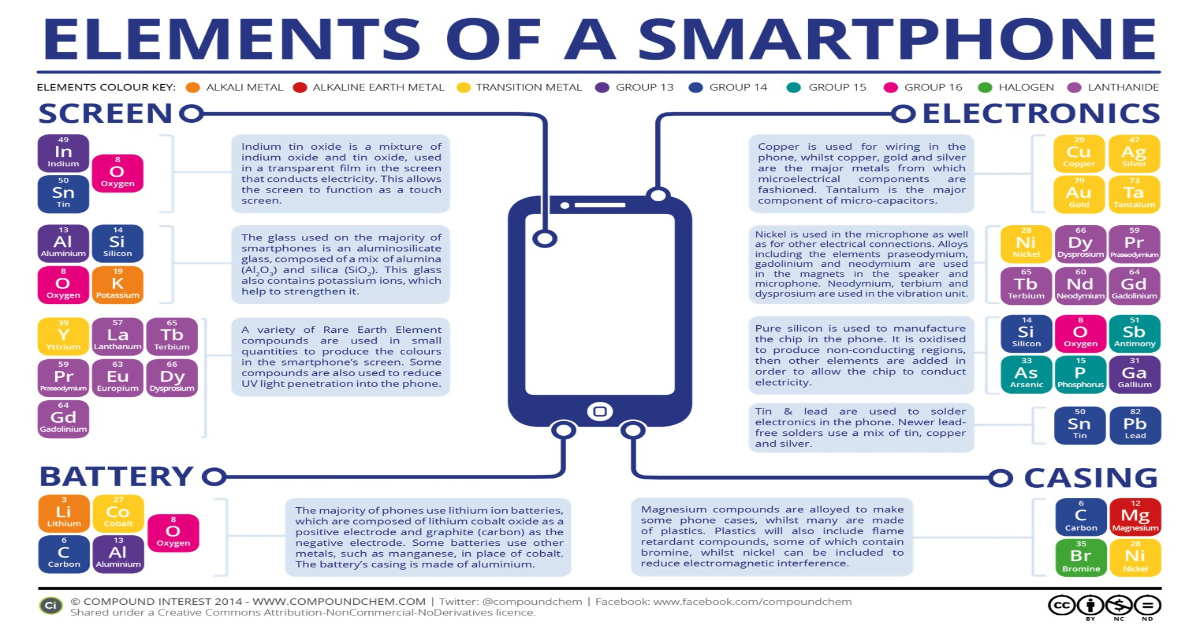
Example: Elements Found in Mobile Phones | Compound Interest, 2014
Estonia’s E-Waste collection rate is 76%
To collect and recycle electronic waste – or e-waste – the concept of urban mining was developed in Japan in the 1980s. Its goal is to reclaim precious and rare earth metals from discarded electronics in landfills. Today, this concept is widely adopted, and Estonia boasts an impressive e-waste collection rate of 76%. However, in practice, we only recycle plastic, as we currently lack the capacity for metal pre-processing and recovery. E-waste, with its complex physical and chemical composition, is much harder to process than natural metal ores.
Estonia aims to generate over half of its electricity from renewable sources by 2030. As we transition to environmentally friendly energy technologies, the demand for mineral raw materials is increasing – both in quantity and variety. Electric vehicles and wind turbines, for example, require far more and different raw materials than traditional cars or fossil-based power sources. In fact, the development of clean, carbon-free energy depends on the availability of several critical metals.
The European Commission has compiled a list of critical raw materials. The 2023 list includes 34 materials considered of high economic importance and high supply risk, many of which are imported into Europe from outside the continent. Some of these materials can also be found in Estonia – such as phosphate (essential for fertilizer production), vanadium (used in battery technology and steelmaking), and rare earth elements (vital for sustainable energy technologies like wind turbines and solar panels, as well as electronics, supermagnets, speakers, LED lights, medical devices, and more).
As we transition to environmentally friendly energy technologies, the demand for mineral raw materials is increasing – both in quantity and variety.
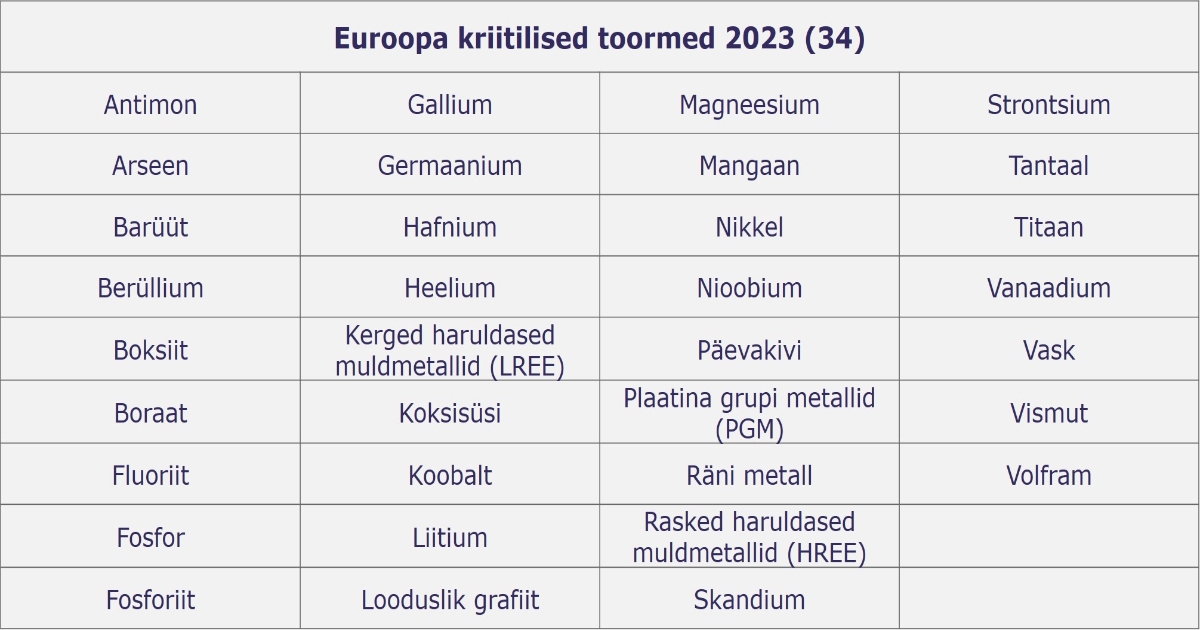
List of Critical Raw Materials in Europe | European Commission, 2023
To meet global demand and enhance sustainability, the mining sector is increasingly shifting away from a linear economy toward a circular one – a closed-loop system where minerals, materials, and products remain in use for as long as possible, and waste is either minimized or reused in other processes. Since it’s not yet possible to recover 100% of the raw materials needed for a sustainable future, a significant share still has to come from mining. However, the share of circular economy principles applied in the sector is growing every year.
Tallinn University of Technology also aims to become a climate-neutral and sustainable university by 2035. Do your part – reflect on your consumption habits, environmental footprint, and the resources you use every day!
This presentation was supported by the European Union’s research and innovation program “Horizon Europe.”



